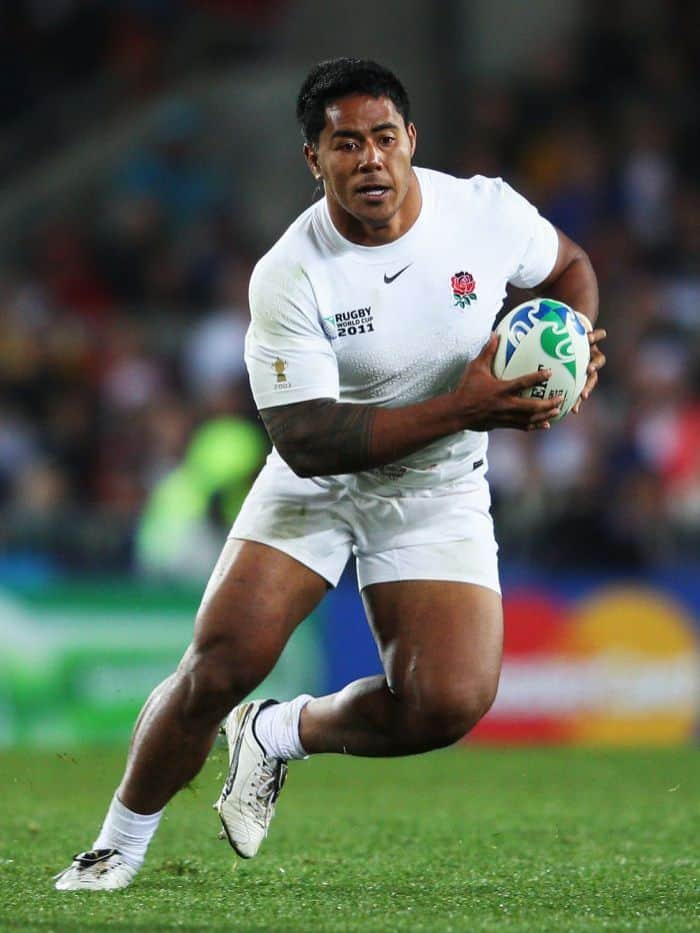
You don’t always need to be deadlift 300kg or squatting 200kg to build muscle, increase your speed, strength and your performance on the rugby pitch. Bodyweight exercises are highly effective at making rugby players more athletic and conditioning their bodies to conquer the stress of rugby. We will show the best bodyweight exercises that will take your rugby game to a new level.
Why Are Bodyweight Exercises Good For Rugby?
Bodyweight exercises are good for rugby because they are low impact, meaning there is a decreased risk of injury compared to weighted movements. They can be performed anywhere as they don’t require fancy equipment. They are better suited to building explosiveness and speed than weightlifting exercises.

Even though performing bodyweight exercises may not be as cool as psyching yourself up and hitting a new pr on your deadlift while all your teammates are screaming, they are not nearly as taxing on your body.
Bodyweight exercises are easy to recover from and the risk of injury is low as the stress your body is under is not as intense as for example a heavy squat or bench press.
When performing bodyweight movements you don’t have to worry about central nervous system fatigue which is common for players to suffer from after intense heavy weightlifting sessions. After a big squat or deadlift session players will often feel slow and sluggish the following day or two, this does not with bodyweight exercises.
When you are lifting big weights in the gym there is always going to be a risk of injury. The heavier weights you use the greater the risk. It is not uncommon for players muscles and joints just to give out without warning when lifting heavy loads.
I have seen players tear shoulders and pecs seemingly out of nowhere when bench pressing heavy. The chance of this occurring when performing for example a push up is incredibly small.
Not only are bodyweight exercises safer and don’t cause central nervous system fatigue they are also better suited to building speed and explosiveness. If you have watched track and field athletes train they use a lot of bodyweight plyometric and jump exercises to build speed and explosiveness.
These coaches are experts at increasing an athlete’s speed so if they prefer bodyweight exercises then that is strong evidence that they are more effective that weighted movements.
As rugby players need to stay strong, fit and healthy throughout the season and are always looking for ways to increase their speed and explosiveness on the rugby pitch bodyweight exercises tick all the boxes for rugby athletes.
What Are The Best Bodyweight Exercises For Rugby?
The best bodyweight exercises for rugby players that will build muscle, increase your strength and turn you into a speedster are:
- Pull Ups
- Dips
- Ab Wheel
- Bounding Broad Jumps
- Tuck Jumps

Pull Ups

Pull ups are famously used by athletes from lots of different sports. Boxers, wrestlers, gymnasts, track athletes and rugby players all love pull ups. If all these different athletes are using pull ups to build strength and develop their backs then you better add it to your strength program right now!
Pull ups are the king of lat and upper back development. Find someone who can perform 25 strict pull ups who has a weak back, not going to happen. If you are struggling to find exercises that really target the upper back and lats then pull ups are your answer.
On the rugby field keeping a straight back or suffering from upper back rounding can be the difference between making a dominant tackle or being bounced off and eating a face full of grass. To ensure rugby players keep a nice straight back when tackling all athletes need to be performing pull ups.
Rugby players should aim to be able to perform at least 20 pull ups.
Here is a video demonstrating how to perform a pull up
Dips
Rugby players need rope like arms and a strong chest to complete tackles. When finishing a tackle rugby players will wrap their arms around the player’s legs and then squeeze them together, by pinching their elbows to ensure the ball runner can’t escape and comes crashing to the ground.
The squeezing motion recruits both chest and arm muscles and requires both explosive strength during the squeezing phase and static strength in the holding of the squeeze phase.
Dips will give you incredibly strong arms and chest. Dips recruit your triceps and lower chest and really tax the muscle, which forces your muscles to grow at a rapid pace.
Here is a video demonstrating how to perform dips
Ab Wheel
To dominate on the rugby field you need an iron core. Your core helps you maintain an optimum body position of bent legs, straight back, neck slightly looking up on the rugby field.
Your core will ensure you transfer maximum power when running into contact and delivering bone crunching tackles. Your core links your upper and lower body helping them work in unison, allowing force to travel from your legs to your shoulders and vice versa.

One of the most effective core building exercises for rugby is the ab wheel. First you will need to buy an ab wheel. They are a little plastic wheel with handles on either side. Don’t worry they are easy to find and can be bought for $10. They are worth the purchase if you want to have your abs popping through your jersey by the time the next season rolls around.
To perform the ab wheel exercise get on your knees and place the ab wheel in front of you. Grab the two handles with both hands and then roll the wheel out in front of you while keeping your knees in the same place. Roll until you are fully extended and then pull the wheel towards you until you return to the starting position.
The ab wheel is great for rugby because during a match you will often find yourself in an extended overhead position. Whether you are lifting in the lineout, placing the ball after being tackled or diving and scrambling to take possession of a loose ball building core strength in this overhead position will improve multiple areas of your rugby game.
Bounding Broad Jump
Rugby players need to be fast and explosive. Fortunately, there are specific exercises which you can perform to improve your sprinting ability and acceleration on the rugby field.
Plyometrics and jump training are the most effective way to increase rugby players’ speed and explosiveness. Plyometrics allow rugby athletes to exert maximum force production over a short interval while keeping the risk of injury low.
Bounding broad jumps are one of the best plyometric exercises for rugby players as they are simple and have been proven to be effective by track athletes.
To perform a bounding broad jump, stand with your feet shoulder width apart, squat down and jump as far forward as possible. You should swing your arms to propel you forward while keeping your chest up. As you land from your first jump you should immediately perform another jump.
Rugby players should perform bounding broad jumps once a week and perform 6 sets of 4 jumps.
Here is a video demonstrating how to perform a bounding broad jump
Tuck Jump
Rugby players need to use plyometrics. Too many players are just focused on improving their bench, squat and deadlift. Now while these exercises are great they are not the most effective at building speed and acceleration.
A simple but highly effective exercise that will make rugby players faster and more explosive is the tuck jump.
To perform a tuck jump, stand with feet shoulder width apart, squat halfway down, then jump as high into the air as possible and bring your knees to your chest.
The higher you can jump in the air and the higher you can bring your knees up the better. You need to time your jump and swing your arms so you can achieve maximum height.
Rugby players should perform tuck jumps 1 to 2 times a week and perform 6 sets of 4 jumps.
Here is a video demonstrating how to perform a tuck jump
